SD › Madrid › Best Tours & Things to Do
Updated: May 11, 2022
By Santorini Dave
See Also
Best Tours in Madrid
- Madrid Region Wineries: Full-Day Guided Tour and Tastings
- Traditional Spanish Cuisine: 3-Hour Cooking Class
- Madrid Ham Tasting Tour & Wine
- Wine & Tapas in Madrid
- Old Madrid Walking Food and Wine Tour
-
The Prado Museum
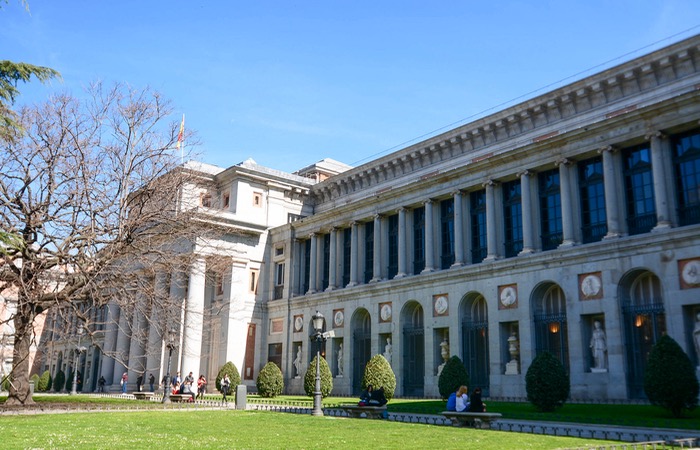
One of the world’s top art galleries. With a collection spanning more than 7,000 priceless artworks, Madrid’s Museo del Prado is arguably the world’s top art gallery of European masters. It is also the best place in the world to immerse yourself in the works of master Spanish artists; Francisco de Goya tops this list, but the Prado is also particularly strong on the 17th century court painter Diego Velázquez. On the ground floor, visitors will find works by Rafael in the Italian Renaissance collection, as well as an excellent Flemish collection featuring The Garden of Earthly Delights – a showstopper by Heironymus Bosch. Head up to the first floor to view works by Murillo, Rubens, Velázquez and Titian, with three rooms alone devoted to Spanish Renaissance master El Greco. Don’t miss the Edificio Jerónimos, with its excellent temporary exhibitions, or the beautiful 2nd-floor cloisters. Book your ticket online to avoid waiting in queue. Admission is free between 6 and 8pm Thurs-Sun, but it’s not really worth visiting then because of the massive crowds. Photography not allowed.
• Nearest transport: Banco de España Metro -
Visit the Royal Palace
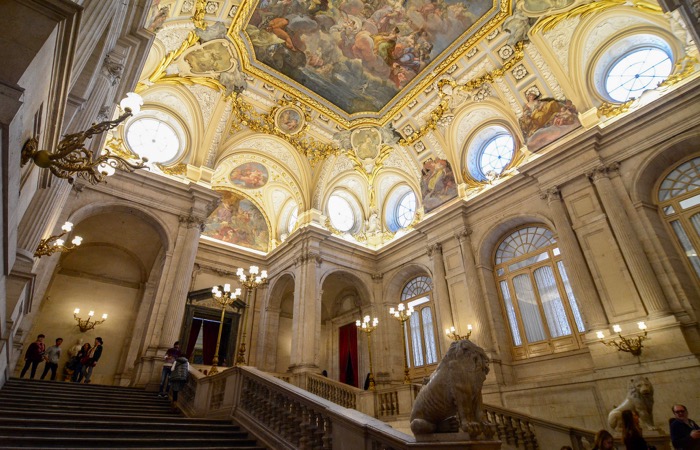
Spain’s grand royal palace. As European royal palaces go, Madrid’s Palacio Real may not be as large as Versailles in Paris, or Schönbrunn in Vienna, but its sumptuous decor gives the other two a run for their money. An imposing French-Italian Baroque palace full of Italian frescoes, French tapestries, gold leaf, chandeliers, and Spanish porcelain, the Royal Palace is now used primarily for state functions and ceremonies; the royal family lives in a mansion elsewhere in the capital. Palace audioguides are better than the guided tours, taking visitors up the grand staircase to the Hall of Columns – the gorgeous former ballroom where Spain joined the European Union, as well as the Gasparini Room (formerly the king’s dressing room), dazzling with gold-green-pink decor, and the sumptuous Carlos III bedroom. Other highlights include the Gala Dining Hall where the King of Spain receives foreign dignitaries, the royal chapel, the world’s best collection of Stradivarius instruments, the glittering crown and scepter of King Carlos II, and the grand Throne Room. The weaponry belonging to various Spanish kings is in the Armory across the courtyard from the palace. Try to arrive at opening time to avoid queues.
• Nearest transport: Ópera Metro -
Marvel at modern art in the Thyssen-Bornemisza Museum
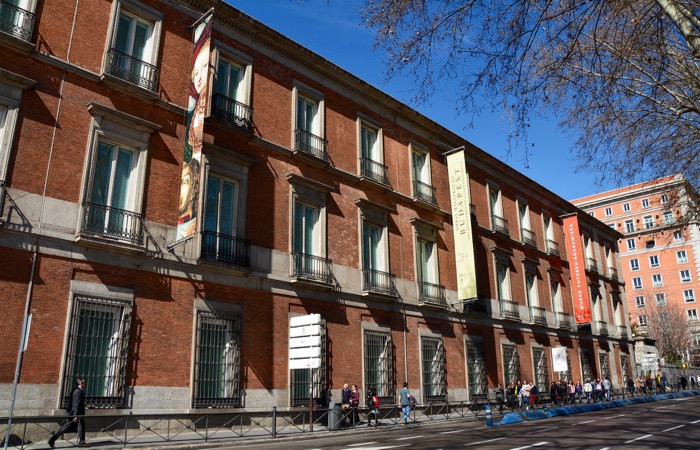
Formerly belonging to Baron Thyssen-Bornemisza de Kászon, this extraordinary extensive collection was sold to Spain and now forms part of Madrid’s “Golden Triangle” of art. Whereas the Prado and the Reina Sofia galleries provide an in-depth look at the works of specific artists, the Thyssen gives you the chance to explore a huge array of artistic styles, including the Thyssen’s forte, Impressionism. The collection is spread across three floors, with each floor featuring a permanent collection and rotating works acquired since the 1980s. Of the latter, look out for pieces by Constable, Van Gough, Kandinsky, and Guaguin. The permanent collection doesn’t disappoint, either; highlights include works by heavy-hitters such as El Greco, Titian, Tintoretto, Goya, Renoir, Van Gough, Manet, Pissarro, Dalí, and Chagall, Lucian Freud, Henry Moore, and Francis Bacon.
• Nearest transport: Banco de España Metro -
Wander Retiro Park
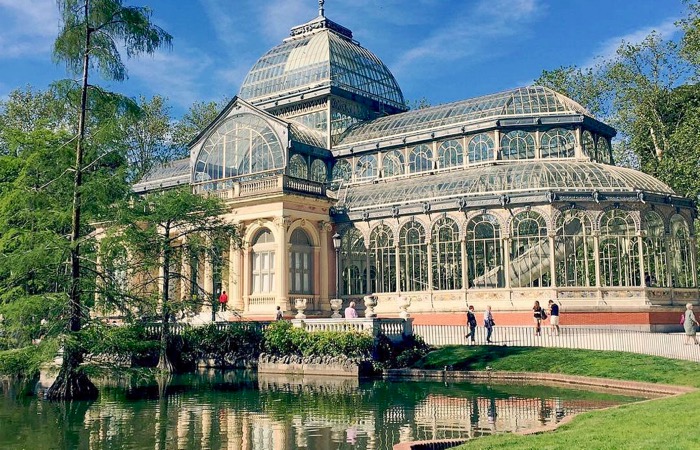
Madrid’s most popular park. Created in the 17th century for King Felipe IV and formerly reserved for the Spanish royal family, this vast park just west of Madrid’s art museums is hugely popular with locals and visitors alike. Since its public opening in 1868, Madrileños have been coming here to read, stroll past landscaped lawns, play with their kids, boat on the park’s larger lake (El Estangue), or enjoy a cold drink in one of the park’s numerous terrazas (open-air cafes). On weekends, when it’s busiest, buskers, tarot readers, jugglers and other street performers cluster along the lake walkways, but the 300-acre park is large enough so that it’s possible to find a quiet spot even then. Don’t miss the Palacio de Cristal, the glass palace conservatory south of the lake; the Centro de Arte Reina Sofía holds occasional art exhibitions here.
• Nearest transport: Retiro Metro -
Go tapas bar hopping in La Latina
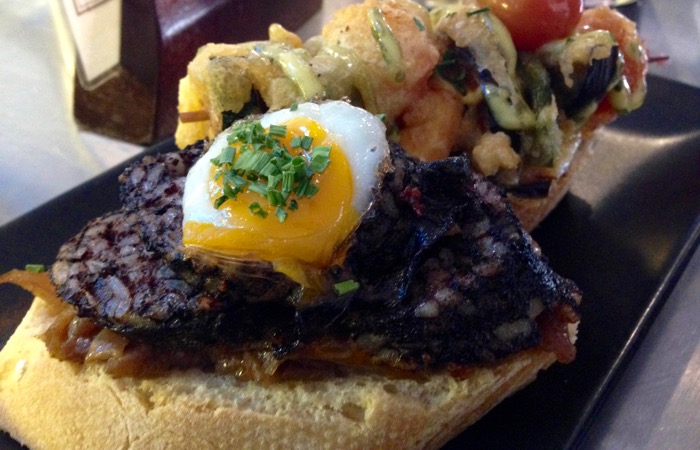
Madrid’s liveliest areas for tapas. The most sociable way to dine out in Madrid is to make like the locals and do the tapeo – a circuit of the local tapas bars; eating, drinking and socializing with friends and family. Calle de Jesús near the Prado and the streets around La Latina Metro and Plaza Santa Ana have the densest concentration of popular tapas bars. They get packed in the evening, so it’s often standing room only or very limited seating. At Plaza Puerta Cerrada 7, try the century-old El Madroño, a refined vermouth bar named after the strawberry tree symbol of Madrid. On Calle Cava Alta, Taberna Matritum is renowned for its seasonal tapas, including grilled calçots (Catalonia’s giant spring onions) and grilled squid with butifarra (Catalan sausage). On Calle de Jesús, Taberna de la Daniela Medinaceli is one of the best places in town to try cocido Madrileño, a hearty chickpea stew, while the Taberna Maceira serves a great selection of Galician standards, including pulpo a la gallega (Galician-style octopus) and pimientos de padrón (spicy green peppers). La Casa del Abuelo near Plaza Santa Ana is the place for seafood lovers, with gambas (shrimp) prepared many different ways, while Las Bravas is a perpetually packed little bar particularly famous for its patatas bravas (potatoes in a spicy sauce), as well as the Madrid staple of oreja a la plancha (grilled pig’s ear). -
Visit the Queen Sofia Arts Center
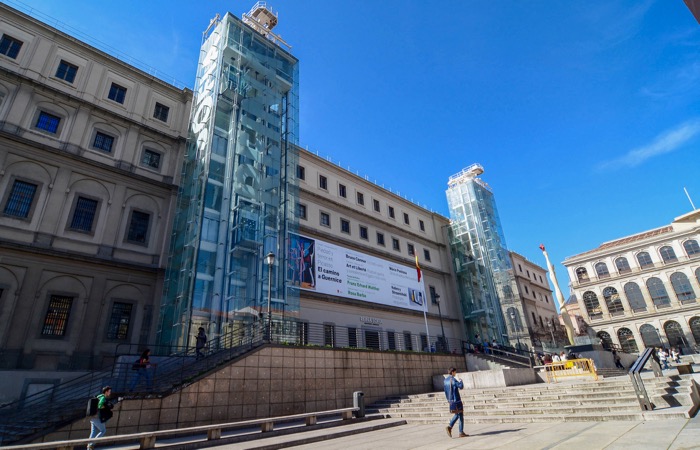
Madrid’s top contemporary art gallery. Originally Madrid’s first public hospital, Museo Nacional Centro de Arte Reina Sofia is now gleaming museum, showcasing Madrid’s premier collection of contemporary art. Cubism, surrealism and other 20th-century art movements are well-represented here, as is contemporary sculpture. Though there are a few works by non-Spanish artists, such as Braque and Kandinski, the majority of works are by Spanish artists, with a particular emphasis on 20th-century greats like Picasso, Dalí, Miró, and Tàpies. The star of the collection is Picasso’s Guernica, a monumental canvas that was inspired by Hitler’s bombing of the Basque town of the same name. Visit the room behind Guernica to see Picasso’s works that became the basis for the final piece. Other highlights include Cubist works by Gris and Braque, the dreamlike Surrealist works of Dalí, the bold, primary colors of Miró, and some rare proto-modernist engravings by Goya. No photography is allowed in the Guernica room. There’s an excellent café just outside the main entrance.
• Nearest transport: Atocha Metro -
Do a loop walk from Plaza Mayor
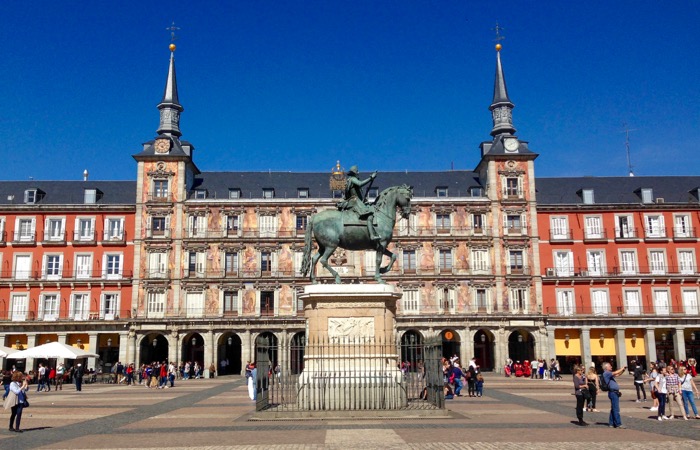
Take a stroll around Madrid’s historic center from the city’s central square. Start your walk at the cobbled, pedestrianized Plaza Mayor. Originally a marketplace, during the 17th century this square was the stage for bullfights, royal processions, and the burning at the cross of heretics during the Inquisition. Today, it’s a popular gathering spot, with cafes around the edges, attractive Baroque architecture and a statue of Felipe III on horseback. From the square, head west past Mercado de San Miguel, a beautiful 1916 structure that’s also a popular stop for tapas. Take a left and then a right to reach the beautiful 17th century Corpus Christi Monastery; to buy homemade cookies from the nuns, look for the Venta de Dulces sign. Then head north to the Plaza de la Villa, the ruling center of medieval Spain, where you’ll find the ceremonial town hall with coats of arms of Madrid’ rulers. Continue west along Calle Mayor to La Almudena Cathedral and then head north, past the Royal Palace, to the peaceful Plaza de Oriente, studded with statues of Visigothic kings. Walk east, past the Teatro Real – Madrid’s opera house – to Plaza Isabel II, busy with occasional street stalls. Then take the pedestrianized Calle del Arenal to Puerta del Sol, Madrid’s center and a hub for street performers, protestors, and parades.
• Nearest transport: Sol Metro -
Do a Day Trip to Toledo
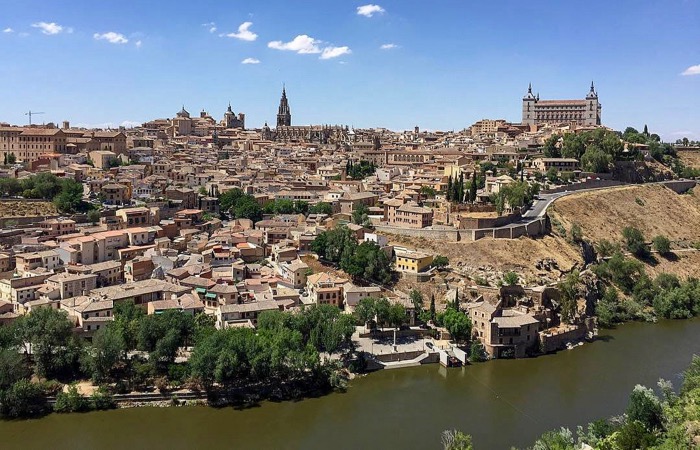
Spain’s stunning 2,500-year-old former capital. Nestled within the banks of the curving Tagus River lies a tangle of narrow, cobbled, streets that is the heart of historic Toledo. Toledo’s roots comprise two and a half millennia of Roman, Visigothic, Jewish, Moorish, and Christian heritage, and the city was Spain’s capital until 1561. The best thing to do in Toledo is to simply lose yourself in its maze of ancient streets and drink in the medieval atmosphere, though there are also several unmissable attractions. In the very center of town stands Catedral Primada, one of Spain’s most extravagant cathedrals; its sacristy houses a gallery of paintings by El Greco, Zurbarán, Velázquez, and other masters. Fans of Spanish art also won’t want to miss the artists El Greco Museum, home to a fine collection of the namesake master’s paintings. Toledo’s Jewish roots are on display in the Sephardic Museum, set within the stunning 12th-century El Transito Synagogue. The only Moorish building that survived the Reconquista is the small yet beautiful Mosque of Christ the Light on the northern slopes of town; though it has since been converted to a church, the mosque’s original arches survive. There are plenty of restaurants scattered around; don’t miss the opportunity to try the local specialty, cuchifritos: lamb, tomato and egg cooked in white wine.
• Nearest transport: Toledo is a 71km drive from Madrid; you can also take the frequent, high-speed AVANT train from Madrid Atocha station (roughly hourly; 30 minutes) and then a bus from the train station to Plaza de Zocodover in the old town. -
Night out in Malasaña
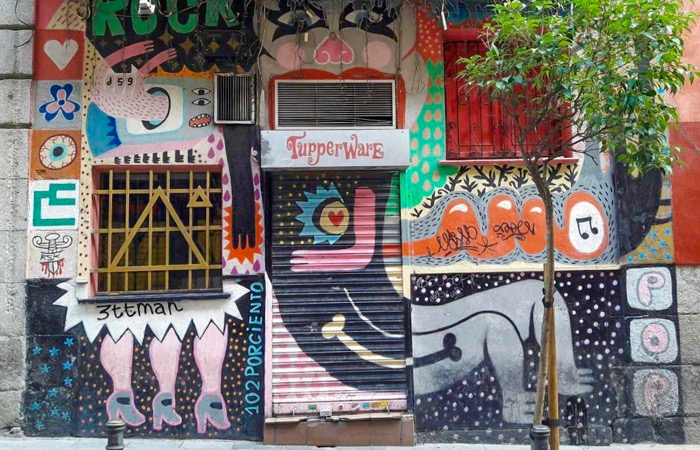
Live music and clubbing in Madrid’s liveliest neighborhood. If you had to choose one part of Madrid for a raucous night out, your best bet would be hedonistic Malasaña, the heart of the counter-culture movement that hit the capital after Franco’s death in 1975. Madrileños head out late and stay out til dawn – the action in nightclubs doesn’t kick off until well after midnight, so plan your night accordingly. Kick off your night at El Jardín Secreto, an intimate, candlelit drinking venue festooned with Indian fabrics and serving great cocktails. Alternatively, have a beer or two at Kikekeller, one of Madrid’s bares clandestinos (shop by day, cool bar by night). Then proceed to La Vía Lactea for a taste of grungy, 1980s Madrid; live music here ranges from garage and rock to indie. Other great bars for rock, soul, and indie are Moloko, decked out with old concert flyers, and kitschy-but-cool Tupperware. Head to Ya’sta, a stalward Malasaña club with an eclectic mix of psychedelic trance, indie, techno, and more on the menu. If you want to hear some local rock, there are frequent performances by up-and-coming bands at Siroco earlier in the night, before funk, soul and disco take over.
• Nearest transport: Noviciado Metro -
Do a day trip to Segovia
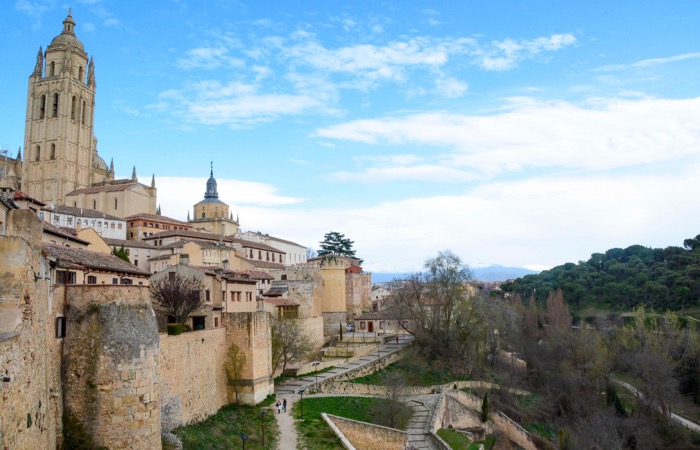
Just 50 miles from Madrid, the historic town of Segovia makes an easy day trip from the capital. Segovia is famous for two things: an impressive Roman aqueduct and a fairytale castle that allegedly inspired the one in Disney’s Sleeping Beauty. Some 100 feet high and 2,500 feet long, the well-preserved, 2,000-year-old Roman aqueduct was built without any mortar and is an extremely impressive sight. The medieval heart of Segovia is shaped a bit like a ship, with the aqueduct at the stern and the castle at the bow. From the main Plaza Azoguejo, take the cobbled Calle de Cervantes that winds through the ‘ship’ and passes by the impressive Segovia Cathedral before depositing you at the Alcázar (castle). With pointed turrets, dry moat, and impressive views from the top, this medieval fortified palace is well worth a visit. Highlights include the Hall of Monarchs, lined with the busts of Spanish rulers, the armory, and the panoramic terrace views. (The terrace is closed in winter.)
• Nearest transport: take the high-speed AVE train (30 minutes) from the Madrid Chamartín train station to Segovia’s Guiomar train station and then catch a bus or taxi to the base of the aqueduct that bisects Segovia’s main square. -
Go shopping in Sol
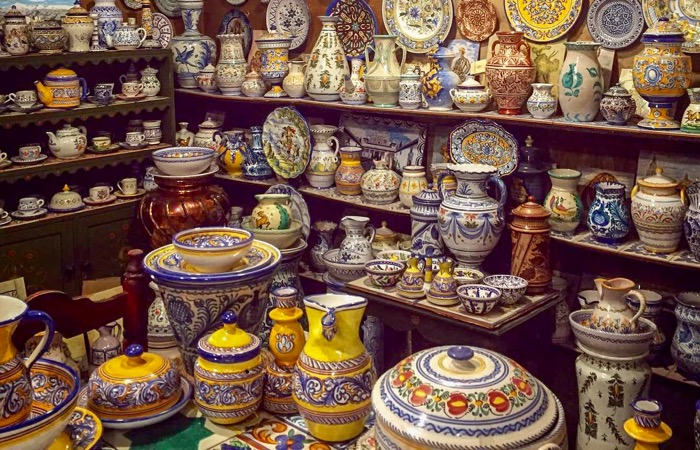
Madrid’s prime shopping area. While the narrow streets between Gran Vía and the Sol Metro station are liberally lined with souvenir shops selling cheap and tacky gifts, there are plenty of quality stores worth perusing. If you’re into handmade shoes (or want to be), Calle Augusto Figueroa is lined with zapaterías that will custom-make footwear to your specifications. While Camper now has outlets all over the world, the original store on Gran Vía has the best shoe selection. If you’re looking for uniquely Spanish gifts, Antigua Casa Talavera specializes in beautiful ceramics from small family potters from all over Spain. Maty sells flamenco outfits, shoes, and accessories, while El Arco Artesanía is all about handmade designer souvenirs, from jewelry and papier-mache figures to home fittings. Foodies should check out any of the several branches of El Museo del Jamón scattered around the city center, selling vacuum-sealed packs of Spain’s finest jamón iberico bellota and other meaty goodies. Union Musical, off Puerta del Sol, sells a wide range of beautiful (and pricey) classical guitars. There are numerous high street fashion outlets around Gran Vía and Puerta del Sol, including Mango and Zara, but for high-end fashion (Gucci, Prada, etc), head to Calle Serrano, just northwest of the Parque del Buen Retiro.
• Nearest transport: Sol or Plaza del Callao Metro -
Have a drink (or two) in Chueca
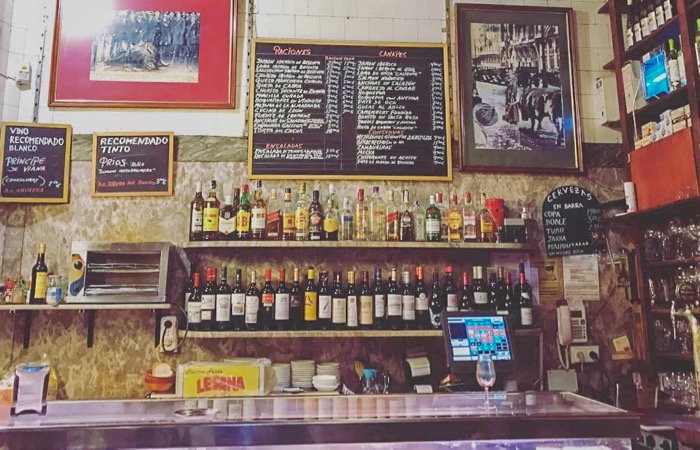
Hip neighborhood, sophisticated bars. Like any capital city worth its salt, Madrid has no shortage of watering holes. One of the best places to head to is Chueca, the epicenter of gay Madrid, with trendy restaurants, chilled-out lounges, and sophisticated cocktail bars. If the latter is your thing, head to Del Diego, one of Chueca’s swankiest bars; the signature ‘El Diego’ is my pick out of the 75 cocktails on offer. Then head on to Museo Chicote, a Madrid landmark once frequented by Hemingway and Sophia Loren; it’s got 1930s decor, an extensive cocktail menu, and DJ action after midnight. With eclectic furnishings, low-key ambience, dim lighting, and killer mojitos, Café Belén is one of my favorites among lounge bars. Bar Cock is a former brothel turned elegant bar with an English pub atmosphere – the cocktails here are some of the best in the country and the place attracts A-list celebrities and hangers-on. If you’re looking for somewhere more down to earth, Stop Madrid is friendly, buzzy taverna with an excellent wine selection, great sangria, and tasty tapas. Finally, if you’re simply looking for a quiet drink, then try Gran Café de Gijón, a grand 19th century café that’s been the favorite haunt of Spain’s greatest 20th century literary figures.
• Nearest transport: Chueco Metro -
Tour the Santiago Bernabéu Stadium

One of the world’s greatest football stadiums. Even if you’re not a Real Madrid supporter, if you’re a football fan, then a visit to Santiago Bernabéu is a must. You can visit the stadium during the day for a self-guided tour of the facilities (buy tickets online or at Window 10 next to Gate 7 at the stadium itself). The tour takes in a panoramic view of the pitch from the top, the presidential box and the press room, the dressing rooms, players’ tunnel, the pitch itself, and the remarkable trophy display of one of the world’s most successful football clubs. Check online what’s available to visit on any given day, as sometimes the changing rooms are off-limits. If you can, visit the stadium during football season (September to May, with the exception of the second half of December) and catch an exciting match alongside 80,000 exuberant supporters. The atmosphere is electric, particularly if a big game is on and Real Madrid are playing their bitter rivals, Atlético de Madrid. You can buy tickets to matches online; for regular games that shouldn’t be too difficult, but to get tickets for a major match, you have to be lucky (or prepared to wait in online queues).
• Nearest transport: Santiago Bernabéu Metro -
Day trip to Monasterio de San Lorenzo de El Escorial
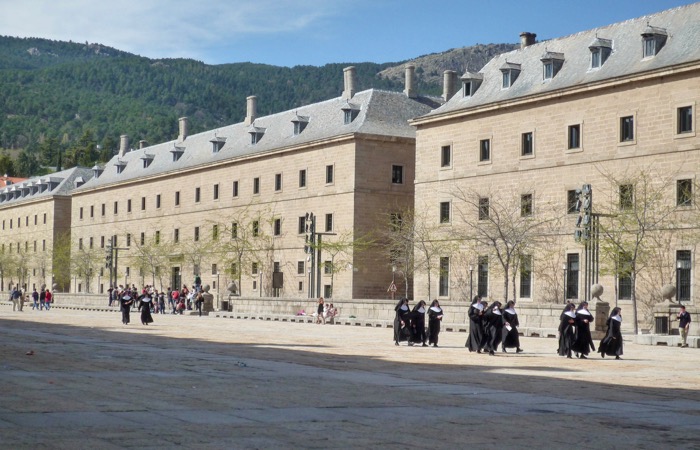
Majestic monastery and palace complex. In the foothills of the Sierra Guadarrama range, 50km away from Madrid, this 16th century royal getaway makes for an easy day trip. If there’s an English-language tour departing just as you arrive, take it. Otherwise, it’s not really worth waiting around, since they are pretty infrequent. A self-guided tour takes you through the Patio de los Reyes, where sits a statue of San Lorenzo holding a gridiron, on which the saint is said to have been roasted alive. Just beyond is a sombre basilica, with a worthwhile work by El Greco in the nearby Museum of Tapestries. Just west of the basilica is the Sala de Batallas, decorated with paintings celebrating Spain’s great military victories. Downstairs find the Museo de Pintura, with 15-17th century works by Flemish, Italian, and Spanish masters. Also downstairs is the Panteón de los Reyes, the royal pantheon where 26 Spanish kings and queens are seeing out eternity. Other highlights include the King’s Apartments and the lovely monumental garden, Jardín del Príncipe. The monastery itself is closed to the public.
• Nearest transport: the easiest way to get here is by frequent bus from Madrid’s Moncloa bus station; buses drop you off in the centre of the little town of San Lorenzo, a ten-minute walk from the complex. -
Do a side trip to the Valley of the Fallen
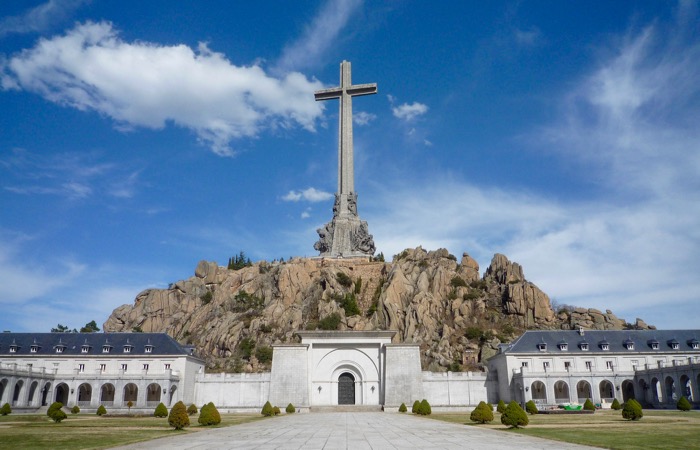
Controversial Spanish Civil War memorial and Franco’s tomb. Easily doable as a side trip from the El Escorial Monastery, the Valle de los Caídos monument consists of an enormous Catholic basilica deep inside a hill, and a 150-meter-tall cross that perches on a granite outcrop above. The memorial, constructed over a period of 18 years in the 1940s and 50s, is controversial because it was built largely with the forced labor of Republican prisoners of war – per Franco’s orders, digging out 220,000 tons of granite from inside the hill and then using the granite to construct the cross. There’s a wintry chill and silence inside the vast basilica, and the remains of 34,000 victims of the Civil War (from both sides) are interred on the high altar. But it’s Franco’s tomb behind the high altar that catches your eye, as well as the grave of the founder of Spanish fascism, José Antonio Primo de Rivera, in front of the altar. To add further controversy, Franco supporters from all corners of Spain gather here on November 20th, the anniversary of the dictator’s death.
• Nearest transport: The easiest way to get here from El Escorial is by taxi. -
Catch a bullfight at the Plaza de Toros
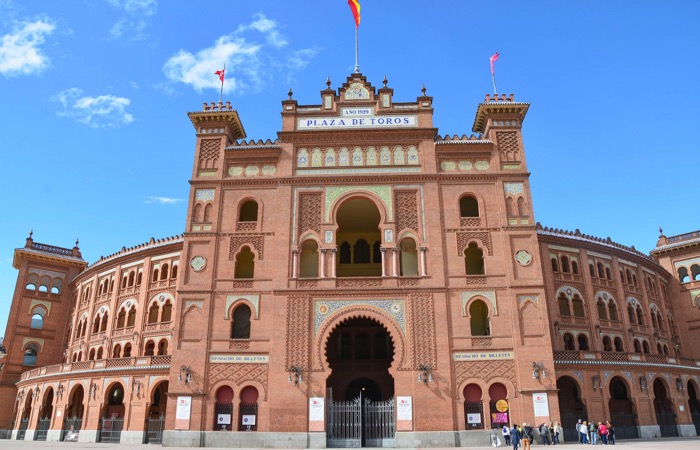
The bullfighting tradition is strong in Madrid, and the country’s top matadors come to show off their skills at the Las Ventas bullring – the grandest in the country. If you’d like to catch a bullfight, the season runs from March to mid-October, mostly on Sundays, and almost daily during the May-early June festival of San Isidro. The drama of a bullfight plays out in three acts. Act I: the matador attracts the bull’s attention with his cape, and the mounted picadores try to weaken the bull by spearing its neck muscle. Act II: banderilleros run towards the bull and try to plunge barbed sticks into its neck to weaken it further. Act III: the matador steps in and does a deadly dance with the bull before going for a clean kill between the shoulder blades. It’s not a spectacle for the squeamish, though there’s no denying the grace and skill of the professional matadors. There are no bad seats in the arena, but the more expensive seats have you sitting in the shade (sombre) and nearer to the action, while the cheaper seats are in the sun (sol) and higher up. For the bigger bullfights, tickets sell out in advance. Even if you’re not interested in attending a bullfight, it’s well worth touring the arena and visiting the museum behind it, with its impressive collection of bullfight-related paintings and spectacular outfits belonging to some of the biggest names in bullfighting.
• Nearest transport: Las Ventas Metro -
Catch a Flamenco Show

While Seville is the undisputed capital of this hypnotic, passionate dance form, it’s taken very seriously in Madrid. Here you are unlikely to catch any impromptu, passion-driven breakout of flamenco music and dance in a random dive bar, but there are several flamenco venues where highly professional performances take place on a nightly basis. Las Tablas offers relatively inexpensive, traditional shows, with a good mix of tourists and locals in attendance; entry price includes a free drink. Taberna Casa Patas – the House of Feet – is the place to catch big names in flamenco. It’s an intimate venue, popular with tour groups as well as locals; book tickets in advance. The flamenco style performed here is more contemporary than at Las Tablas, and there’s an on-site restaurant as well, for those wanting dinner before the show. The less pricey Las Carboneras also offers dinner before the show, as well as unlimited free drinks if you book in advance. There are numerous other venues, but they are less respected and professional than the above three, and the waiters there can be pushy. -
Day trip to Ávila
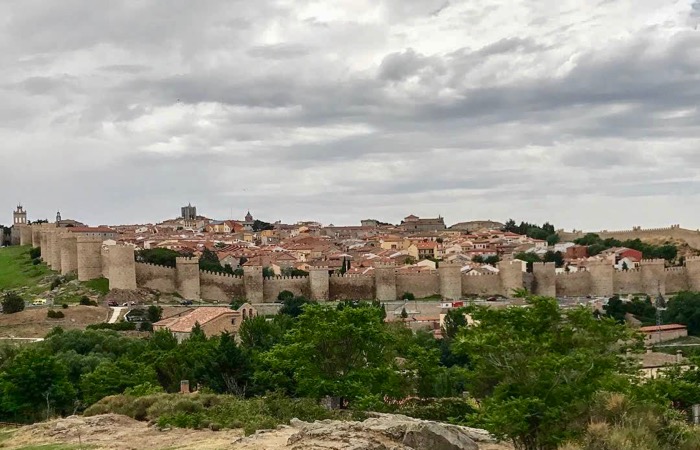
Beautiful historic town with impressive medieval wall. A popular day trip from Madrid, historic Ávila is the birthplace of St Teresa – the most important woman in the history of the Spanish Catholic Church – and is particularly famous for the beautifully preserved 12th-century wall that encircles the town’s medieval heart. Built on top of earlier Roman and Moorish battlements, the wall can be climbed, with two sections accessible to the public: the 1300m stretch that runs along the north side of the old city, and a 300m stretch, accessed from inside the Puerta del Alcázar. Other attractions include the fortress-like Gothic cathedral on Plaza de la Catedral; it dates back to the 12th century and has a magnificent interior. Pilgrims make a beeline for the 17th century Convent of Santa Teresa, built on the spot where the saint was born; her ring finger, complete with ring, is displayed in the relics room. For the best view of Ávila’s walls, drive or take a taxi northwest of the city towards Salamanca, to the Los Cuatro Postes viewpoint. Try to linger in Ávila after dark, when the medieval, lamp-lit streets are particularly eerie.
• Nearest transport: it takes around an hour and a half to drive to Ávila from Madrid, and about the same if you take one of the frequent trains from Madrid’s Chamartín train station. -
Visit the Templo de Debod
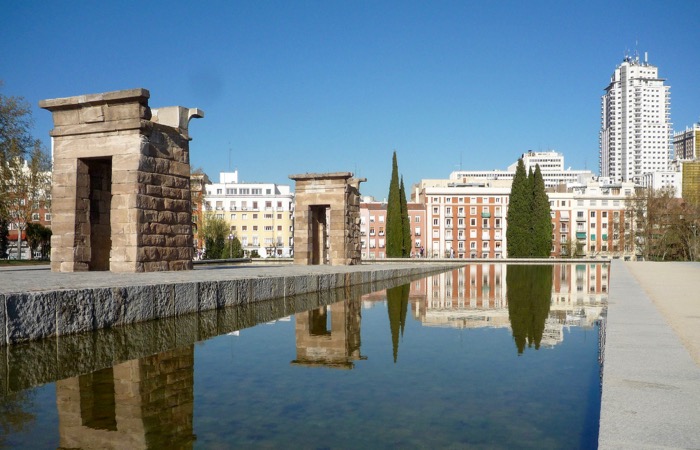
Egyptian temple, relocated to Madrid. Originally located south of Aswan in Egypt, this temple, dating back to the 2nd century B.C., was dedicated to Isis, one of the most important deities in ancient Egypt. Her cult spread across the Roman Empire, and Roman emperors Augustus and Tiberius both contributed to this temple’s design. In 1968, it was donated to Spain by the Egyptian government to thank Franco for assisting in the preservation of several key UNESCO monuments that were threatened by the rising waters of the Nile. The temple – the only one of its kind in Spain – was painstakingly rebuilt, stone by stone, in Madrid’s Parque del Oeste. The park is particularly popular with locals around sunset, when the temple is beautifully reflected in the surrounding pool. Visitors can wander through the original temple rooms, including the small sanctuary of Amun, the god of the sun, and admire the carved reliefs.
• Nearest transport: Plaza de España Metro -
See the view from the Circulo de Bellas Artes
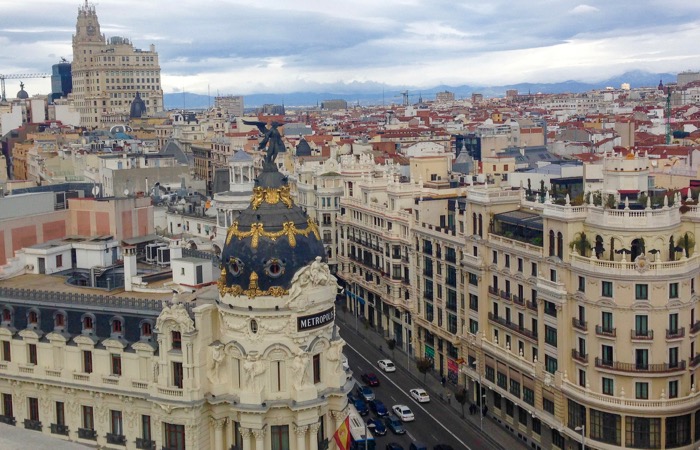
One of the most popular viewpoints in Madrid, this 1920s skyscraper near the Plaza de España has a 7th floor roof terrace, crowned with an Art Deco statue of Minerva, Roman goddess of wisdom and protectress of culture and the arts. You have to pay to take the elevator up to the terrace; once there, you can have drinks at the small rooftop café and get an excellent bird’s eye view of some of Madrid’s notable buildings. The Gran Vía, the golden-domed Metropolis building, the Guadarrama mountain range, the twin-towered Puerta de Europa, and the Plaza de Cibeles are all visible from here, with the greenery of Retiro Park peeking out from behind. Try to go on a weekday, when there are no queues.
• Nearest transport: Sevilla or Banco de España Metro -
Day of fun at Casa de Campo Park
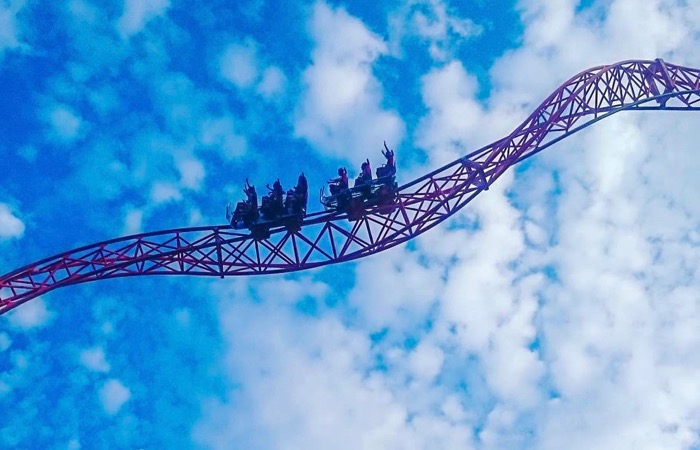
Amusement park, zoo, and Madrid’s largest park. Casa de Campo, the so-called ‘lungs of Madrid’, stretches west of Río Manzanares. It’s crisscrossed with walking trails, dotted with lakeside restaurants, and is particularly popular with families due to numerous children’s attractions. The zoo is a big draw, with animals from all over the world – the stars here are the white Siberian tigers, Atlas lions, and pandas. The zoo also has a huge aviary, home to vultures, eagles, and condors. If you’re looking for something more adrenalin-packed, the nearby Parque de Atracciones is an amusement park with a good assortment of white-knuckle rides for older kids and adults, as well as gentle rides for small children. There are rollercoasters and a simulated bungee jump in the Zona de Máquinas, a Ferris wheel and other family-friendly rides in the Zona de Tranquilidad, and water rides in the Zona de la Naturaleza. The teleférico, a practically horizontal cable car, carries visitors above the river and is a fun way to get into the depths of the park from the Argüelles Metro station. There’s a good playground near the Casa de Campo Metro station.
• Nearest transport: Casa de Campo or Batán Metro, or Argüelles Metro and teleférico -
Catch the views from the Almudena Cathedral
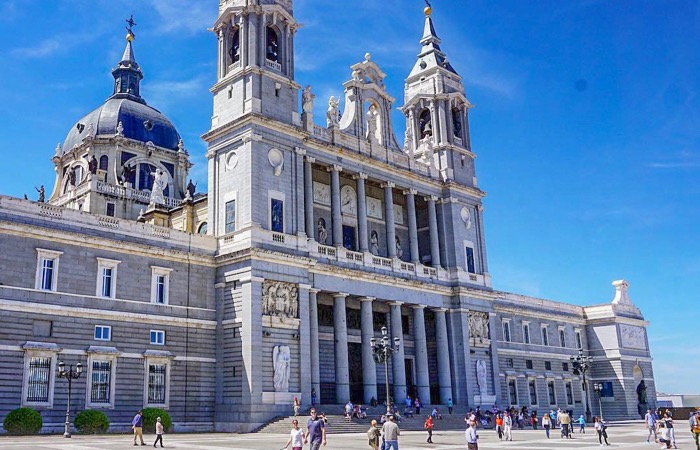
Unremarkable cathedral but great views. Most European capitals are centered around a grand cathedral that harks back to the golden age of Christianity. Madrid is an exception; the Catedral de la Almudena was not completed until 1993, and while its cavernous, neo-Gothic interior lacks the old-world grandeur of landmark, medieval churches (think Seville, Salamanca, and Santiago de Compostela), some visitors find it refreshingly modern in a country where medieval churches are a dime a dozen. Interesting features include a contemporary, colorful ceiling, a splendid 15th century altarpiece and an enormous 5,000-pipe organ. In a chapel behind the altar you’ll find the 12th century coffin of Madrid’s patron saint, San Isidro. The coffin was exhumed 40 years after his death and the saint’s body was allegedly found to have been miraculously preserved. You won’t see him, though; his body now rests in the sepulcher of Madrid’s San Isidro church. The cathedral’s main highlight is the rooftop viewpoint from which you get an excellent view of the Royal Palace.
• Nearest transport: Ópera Metro -
Visit the National Archaeological Museum
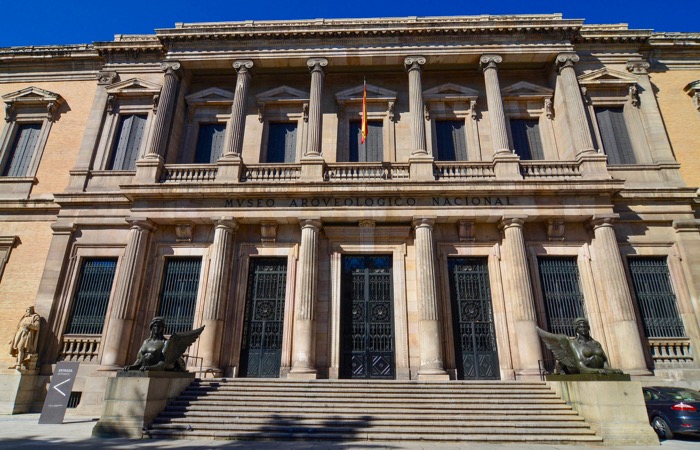
Excellent archaeological museum and crash course in Spanish history. Beautifully renovated, the neoclassical building showcases a well-curated collection of artifacts that tell the story of the Iberian peninsula, with a focus on each significant epoch. Start with the earliest human presence in Iberia in the Neolithic, Copper, and Bronze Ages on the ground floor and continue upstairs for a look at Celtic Iberia that preceded Roman conquest. The Roman Hispania covers seven centuries of Roman rule during which Spain produced several Roman emperors; don’t miss the remarkable mosaics. Late Antiquity deals with the collapse of the Roman Empire and the subsequent conquest of Spain by the Germanic Visigoths, while the Medieval World is an in-depth look at the 711 A.D. arrival of the Moors in Spain and their 800 years of cultural contribution before being expelled by Catholic monarchs in the 15th century. On the 2nd floor there are riches on display from the Spanish conquest of the New World, as well as non-Iberian exhibits that reconstruct the daily lives of Egypt’s ancient inhabitants who lived along the Nile. The ancient Greeks’ beliefs in death and the afterlife are explored in the Greece section, along with a choice collection of pottery. The museum organizes family activities and holds twice-monthly workshops in which kids aged 9 and older can learn about archaeology.
• Nearest transport: Serrano or Colón Metro -
Smell the flowers in the Royal Botanic Garden
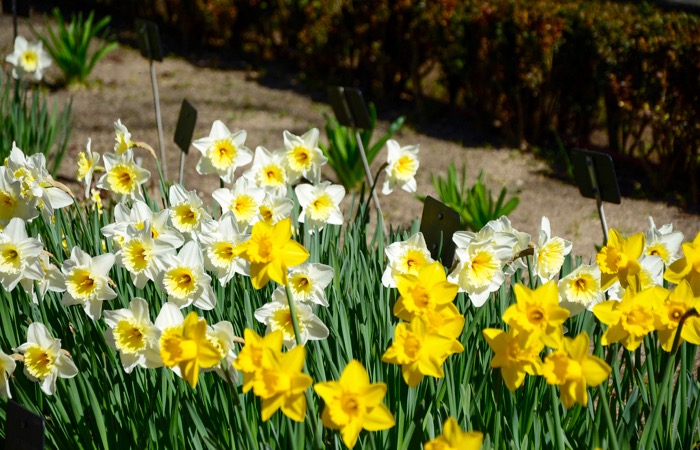
Just south of the Museo del Prado and east of Retiro Park, this sculpted green space is a great spot to relax after you’ve visited the nearby art galleries. It’s small, compared to El Retiro, but there are over 30,000 species of plants in this 8-hectare space, including exotic trees from around the world. King Carlos III moved the gardens to this location from their original spot on the banks of the Manzanares River, and his statue proudly stands in the center of the gardens. There are plenty of shaded benches scattered around and it’s a popular place for family visits, particularly on weekends. Head to the Villanueva Pavillion, on the east side of the gardens, to check out the frequently staged contemporary art exhibitions. Call ahead if you want to join a Spanish-language guided tour of the gardens.
• Nearest transport: Atocha Metro -
Shop at the El Rastro flea market
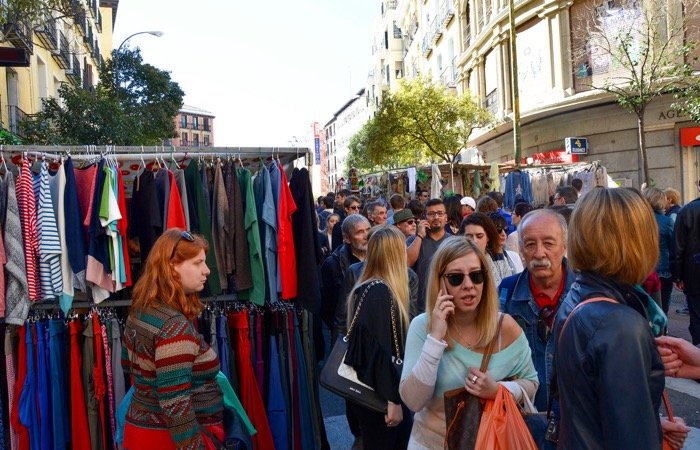
Every Sunday, between 9am and 3pm, Madrileños head to El Rastro – Europe’s biggest flea market – spreading over several blocks south of La Latina Metro stop. Wander the streets, lined with old furniture, antiques, miscellaneous bric-a-brac, bootleg CDs, and much more. Or head a few blocks north to Plaza Mayor, where you’ll find Europe’s biggest stamp and coin market, busy with collectors. If you’re a serious shopper, there are bargains to be had when the stalls are wrapping up and the vendors are more likely to give you a good deal. But even if you’re not shopping, you can still join the strolling locals, check out the street musicians, stop for cañas of beer along the way, and finish off your stroll with some tapas along Calle Cava Baja. El Rastro is notorious for pickpockets, so watch your belongings.
• Nearest transport: La Latina Metro -
Visit the Hermitage of San Antonio de la Florida
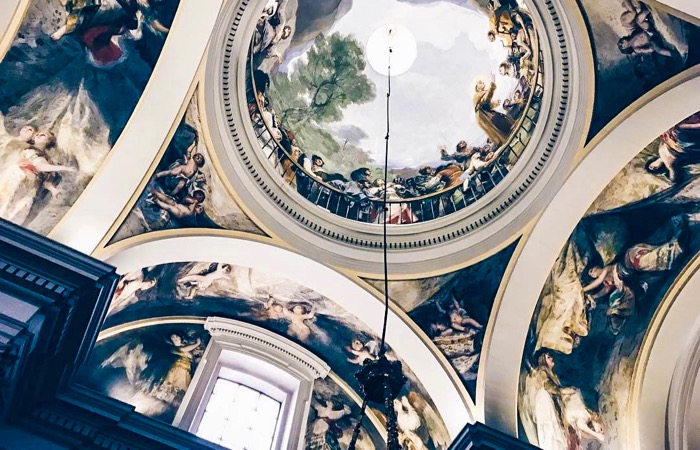
Goya’s final resting place. Northwest of the city centre, near the Casa de Campo, lies a small Neoclassical chapel that dates back to the 18th century. It may not look like much from the outside, but it happens to contain the tomb of Francisco de Goya, one of Spain’s greatest painters. The painter died in 1828 in Bordeux, France, where he lived in self-imposed exile, and his mortal remains were transferred to Madrid in 1919; apparently, when his skeleton was exhumed, it was missing the head. It’s particularly worth visiting Goya’s tomb if you’ve already been to the Prado to see his masterpieces in person. Inside the chapel, a mirrored floor reflects the beautiful cupola and Goya’s own proto-Impressionist frescoes. No photography allowed inside.
• Nearest transport: Príncipe Pío Metro -
Catch a show at Teatro de la Zarzuela
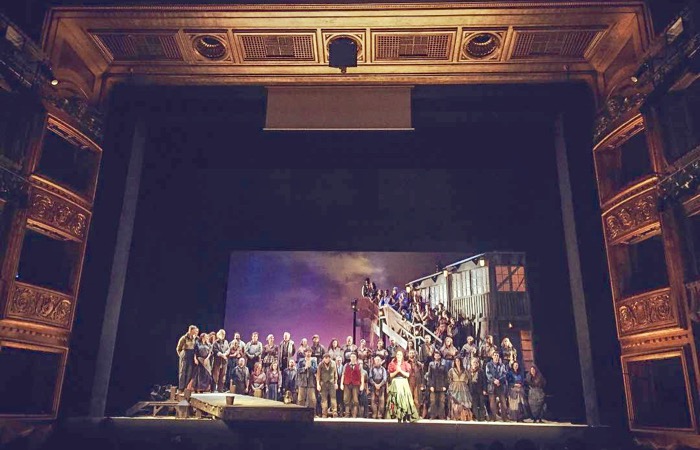
Spain’s unique form of satirical musical comedy. Is it theatre? Is it opera? Is it dance? All of the above and more, zarzuela is a uniquely Spanish pastime, invented in the 17th century as entertainment for King Felipe IV and his court. With their focus on everyday problems, zarzuela shows quickly became popular in Madrid and the capital is still the best place to catch a performance. From the early 20th century, zarzuela works have incorporated double entendres, scenes portraying sexual themes and social criticism. You have to be fluent in Spanish to get the gist of what’s going on; odds are, even then you won’t get the whole storyline, as zarzuelas are full of in-jokes and local references that only Madrileños truly get. Still, it’s an excellent glimpse into local culture, utterly untainted by tourism.
• Nearest transport: Banco de España Metro -
Marvel at pre-Colombian treasures at the Museo de America
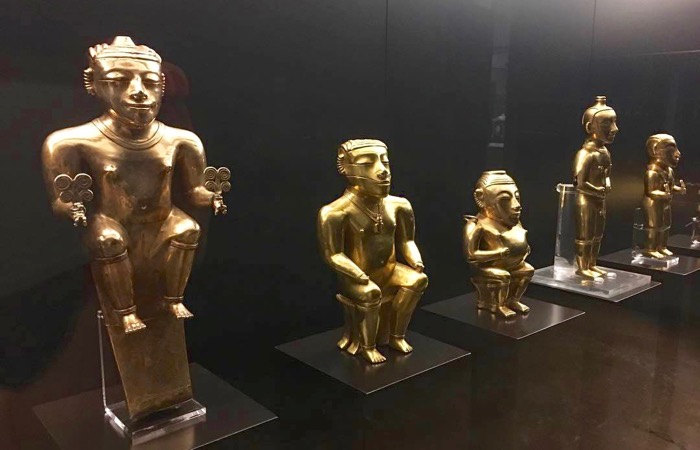
Museum dedicated to the conquest of the New World. Between the 15th and 19th centuries, the Spanish Empire shaped the world like no other. This excellent museum explores Spain’s imperial legacy, focusing largely on the exploration and conquest of Latin America, as well as the cultures, religion, language and art of the indigenous inhabitants of North and South Americas. The exhibits are spread across two floors and comprise a wealth of jewelry (the Colombian gold collection is remarkable), statuary, ceramics, weaponry, and ritual objects looted from Spain’s many South American colonies. One of the rarest objects on display is one of four surviving Mayan codices (ancient manuscripts). The museum is divided into five thematic areas, starting with El Conocimiento de América, which charts Columbus’ landfall in 1492 and the voyages of other explorers. The clash between Spanish and indigenous cultures is also explored, while La Realidad de América attempts to explain how the Latin America of today was shaped by Spanish conquest. Family workshops take place every other weekend and there are occasional activities just for kids.
• Nearest transport: Moncloa Metro -
Visit the Museo Sorolla
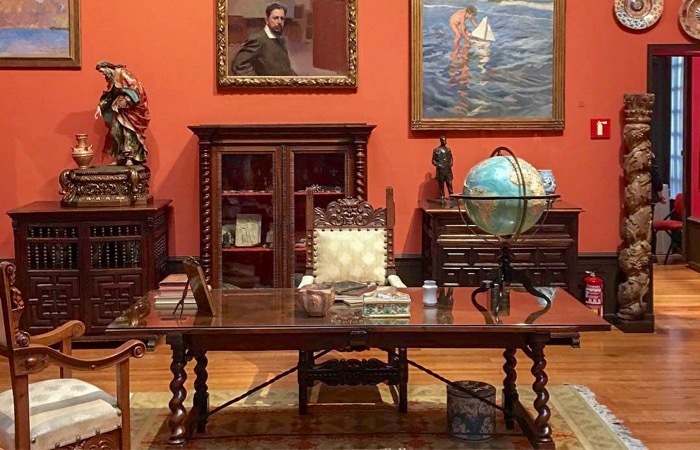
House museum dedicated to painter Joaquín Sorolla. It’s well worth making the trip to the northern reaches of Madrid to visit this mansion surrounded by lush landscaped gardens. The former home of this Valencian artist, renowned for his Mediterranean seascapes, is Madrid’s best house-museum and home to the most complete collection of the artist’s works. Downstairs, an Andalucian-style courtyard leads to a side room showcasing an assorted collection of Sorolla’s drawings. Head upstairs to see the three rooms that the painter used as his studios; the middle one displays the best of his Valencian seascapes, while the last room was his actual workshop. The furniture in the salon and dining area is original, and the artist decorated the place himself. Much of the house has been left exactly as it was during the artist’s lifetime, lending the museum a personal touch. Paintings spanning Sorolla’s entire career are spread across the four adjoining rooms on the top floor, arranged in chronological order.
• Nearest transport: Iglesia Metro -
Take in an exhibition at the Caixa Forum
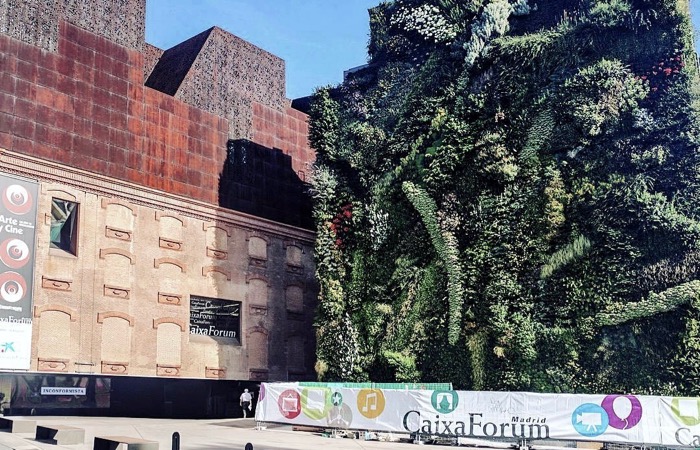
One of Madrid’s most striking contemporary landmarks. This eye-catching 21st century structure across the street from the Prado is a brick edifice topped by a summit of rusted iron. Adjacent to it is a four-story hanging garden. This is an exhibition hall, with four floors of stainless steel and soaring ceilings. World-class contemporary art, photography and multimedia shows take place here on a changing basis three or four times per year. The gift shop is excellent and you can take an elevator to the top, where the on-site café serves fixed-price lunches.
• Nearest transport: Atocha Metro -
Catch the views from the roof of the Palacio de Cibeles
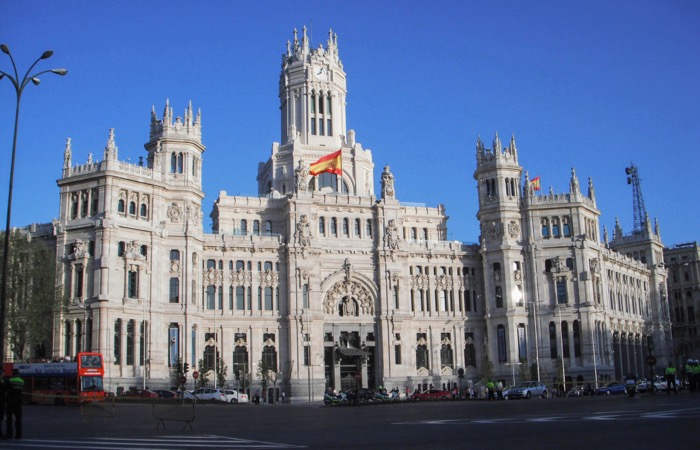
360-degree rooftop views. The 1919 Palacio de Cibeles is a grand building and an emblematic monument of the city, overlooking the busy Plaza de Cibeles. Formerly the post office headquarters, the space was revamped in 2007 and turned into a cultural center with an unwieldy name: the Cibeles CentroCentro de Cultura y Ciudadanía. There are various temporary exhibitions spread across its floors, but the big draw here is the 8th floor observation deck, Mirador Madrid, offering 360-degree views of the city. Entry to the Mirador Madrid is at set times (Tues-Sun); you can purchase tickets online. You enjoy similar views if you eat at the excellent Restaurante Palacio de Cibeles on the 6th floor.
• Nearest transport: Casa de Campo Metro -
Go up the Faro de Moncloa
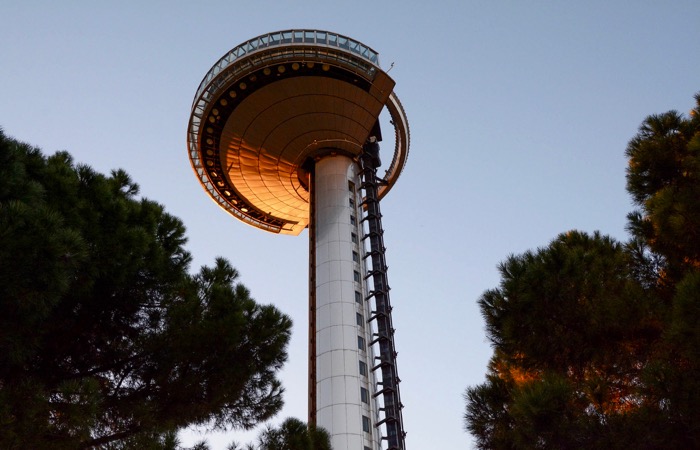
Highest viewpoint in Madrid. Worth the trip to the northwest corner of the city, just west of the hip student neighbourhood of Chamberí, the Faro de Moncloa is a 110-meter-tall former transmission tower that looms above Madrid. It was built in 1992, when Madrid was named the European Capital of Culture. Visitors can take one of two see-through panoramic lifts up the side of the tower to the 92-meter viewpoint at the top that looks like a flying saucer. From the huge glass windows you can see numerous Madrid landmarks: the Royal Palace, the Almudena Cathedral, the 1950s Victory Arch and even the peaks of the Sierra de Guadarrama mountain range, way beyond the city limits. On a clear day, you can see for a hundred kilometers. The tower is closed on Mondays.
• Nearest transport: Moncloa Metro
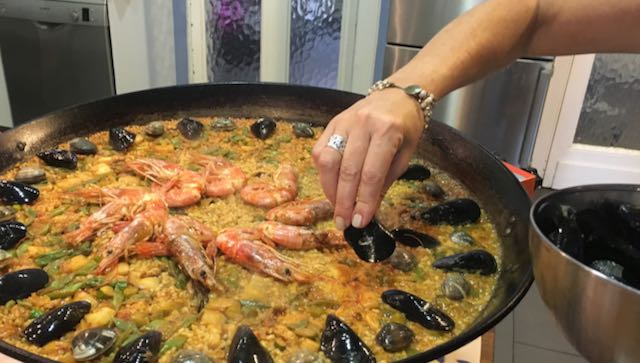
About Santorini Dave